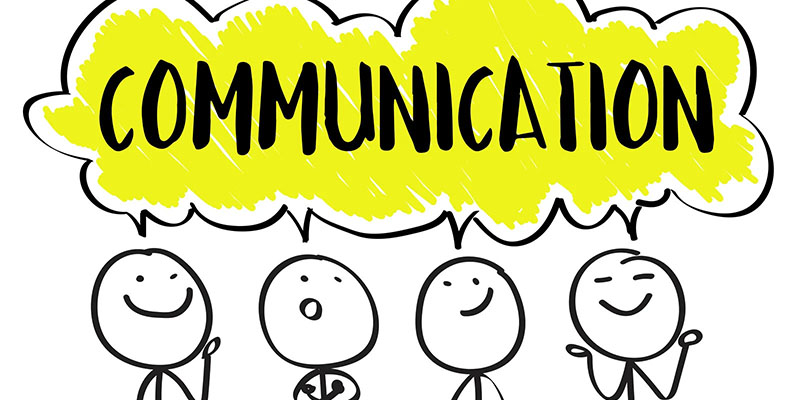In today's fast-paced and interconnected business world, effective team communication is crucial for the success of any organization. The ability to collaborate seamlessly and communicate clearly within a team can greatly enhance productivity, innovation, and overall team performance. In this article, we will explore some key strategies that can help teams establish effective communication and foster seamless collaboration.
Establish Clear Goals and Roles:
One of the first steps in fostering effective team communication is to establish clear goals and define individual roles within the team. When team members have a clear understanding of their responsibilities and the team's objectives, it becomes easier to communicate and collaborate effectively. Each team member should have a well-defined role that aligns with their skills and expertise, allowing them to contribute meaningfully to the team's success.

Open and Transparent Communication:
Open and transparent communication is the foundation of effective teamwork. Team members should feel comfortable expressing their thoughts, ideas, and concerns openly, without fear of judgment or reprisal. Foster an environment where everyone's input is valued and encouraged. Encourage active listening and promote constructive feedback among team members. Regular team meetings and channels for ongoing communication can provide a platform for open discussions and ensure that everyone is on the same page.

Utilize Technology Tools:
Leveraging technology tools can significantly enhance team communication and collaboration. There are numerous collaboration platforms available, such as project management software, instant messaging applications, and video conferencing tools, that facilitate seamless communication and document sharing. These tools can help team members stay connected, share updates, and collaborate on projects regardless of their physical location. It is essential to select tools that align with the team's specific needs and ensure that everyone is trained on their effective usage.

Establish Clear Communication Channels:
Establishing clear communication channels is vital to avoid confusion and ensure that information flows smoothly within the team. Determine the appropriate channels for different types of communication. For instance, urgent matters may require immediate attention and can be addressed through instant messaging or phone calls, while non-urgent matters can be communicated through email or project management tools. Clearly communicate the preferred communication channels to the team and ensure that everyone is aware of the expectations.

Practice Active Listening:
Active listening is an essential skill for effective team communication. Encourage team members to actively listen to their colleagues' ideas and opinions without interruptions. When someone is speaking, others should focus on understanding their perspective rather than formulating their response. Active listening fosters mutual respect, encourages diverse viewpoints, and can lead to more thoughtful and productive discussions. It is also important to paraphrase and summarize what others have said to ensure that everyone is on the same page.
Foster a Culture of Collaboration:
Building a culture of collaboration is crucial for seamless team communication. Encourage teamwork and emphasize the importance of collective efforts. Celebrate successes as a team and acknowledge individual contributions. Create opportunities for cross-functional collaboration, where team members from different departments can work together on projects or initiatives. Collaborative activities, such as brainstorming sessions or team-building exercises, can help foster stronger relationships among team members and promote effective communication.

Provide Constructive Feedback:
Constructive feedback is essential for growth and improvement within a team. Encourage team members to provide feedback to one another in a constructive and respectful manner. Feedback should focus on specific behaviors or actions, be timely, and offer suggestions for improvement. By providing constructive feedback, team members can address any communication issues or misunderstandings, leading to enhanced collaboration and performance.
Regularly Evaluate and Adjust:
Team communication strategies should not be set in stone. It is important to regularly evaluate the effectiveness of communication processes and adjust them as needed. Seek feedback from team members about the existing communication practices and identify areas for improvement. Stay open to new ideas and be willing to experiment with different communication tools or approaches. Regularly assessing and adjusting the team's communication strategies ensures that they remain relevant and effective in meeting the evolving needs of the team.
Foster a Positive and Supportive Environment:
A positive and supportive team environment is conducive to effective communication and collaboration. Encourage team members to support and uplift one another. Celebrate achievements, recognize individual efforts, and foster a sense of camaraderie. When team members feel valued and supported, they are more likely to communicate openly and work together towards shared goals.

Invest in Team Building Activities:
Team building activities can play a significant role in strengthening communication and collaboration within a team. Organize activities that promote trust, cooperation, and problem-solving skills. These can include team retreats, workshops, or even simple team-building exercises. Such activities create opportunities for team members to interact in a non-work setting, build rapport, and understand each other's strengths and weaknesses, leading to improved communication and collaboration.

In conclusion, effective team communication is a fundamental aspect of seamless collaboration. By establishing clear goals and roles, fostering open and transparent communication, utilizing technology tools, establishing clear communication channels, practicing active listening, fostering a culture of collaboration, providing constructive feedback, regularly evaluating and adjusting communication strategies, fostering a positive and supportive environment, and investing in team building activities, teams can enhance their communication processes and achieve seamless collaboration. These strategies not only improve productivity and efficiency but also create a positive team dynamic that contributes to the overall success of the organization.



